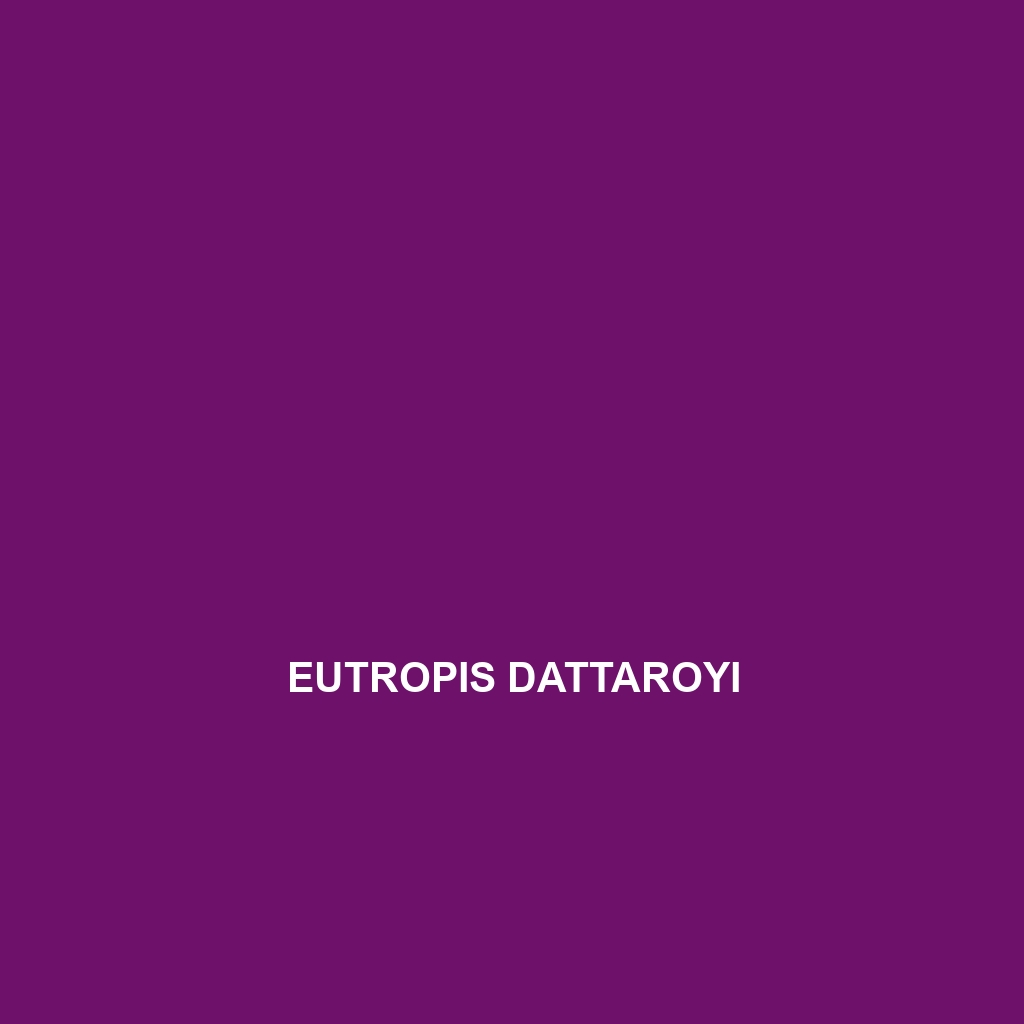Common Name
Eutropis dattaroyi
Scientific Name
Eutropis dattaroyi
Habitat
Eutropis dattaroyi is predominantly found in the lush, diverse environments of South and Southeast Asia. These habitats include tropical rainforests, temperate forests, and savannas. This species thrives in areas with abundant vegetation, providing excellent cover and a rich supply of food. Rainforests, particularly in countries like India and Myanmar, offer the humid climate and diverse flora that support their survival. Additionally, Eutropis dattaroyi can be spotted in shrublands and lowland forests, where the interplay of sunlight and shade creates an ideal microhabitat.
Physical Characteristics
Eutropis dattaroyi typically exhibits a size range of 13 to 20 cm in length. Its body is elongated and flattened, allowing it to navigate through dense underbrush with ease. The coloration is quite striking, featuring a mix of olive green and brown hues that serve as camouflage against the bark and leaf litter of its forest habitat. Notable characteristics include a series of bright, slender stripes running along the length of its body, which not only contribute to its aesthetic appeal but also provide effective disguise from predators. The scale arrangement is smooth, adding to its streamlined appearance.
Behavior
Behaviorally, Eutropis dattaroyi displays both diurnal and nocturnal tendencies, which enhances its adaptability. During the day, it actively seeks shelter in foliage and crevices, while at night, it may venture out to forage for food. This reptile is known for its solitary nature, often found alone instead of in groups. Mating rituals can be observed during the monsoon season, where males engage in displays to attract females. Additionally, these reptiles demonstrate territorial behavior, particularly among males, who will often engage in visual displays or minor confrontations to establish dominance.
Diet
Eutropis dattaroyi primarily follows an insectivorous diet, consuming a variety of insects that inhabit its lush environment. Ants, beetles, and caterpillars make up a significant portion of its diet, though it is also known to occasionally consume small invertebrates. Its feeding pattern is opportunistic, often foraging during both day and night, relying on its keen eyesight and sensing abilities to locate food. This dietary behavior plays an essential role in controlling insect populations within its habitat.
Reproduction
The reproductive cycle of Eutropis dattaroyi is intriguing. Mating occurs primarily during the wet season, which offers suitable conditions for the development of eggs. The female lays an average of 5 to 12 eggs in moist soil or hidden in leaf litter, ensuring optimal humidity for incubation. The gestation period typically lasts between 60 to 75 days. Offspring are born as miniatures of adults and are independent from birth, relying on their instinctual abilities for survival. Parental care is minimal, but females often select safe locations for egg-laying to protect the young from potential predators.
Conservation Status
The conservation status of Eutropis dattaroyi is currently categorized as ‘Least Concern’ by the International Union for Conservation of Nature (IUCN). This categorization suggests that the species is not immediately threatened; however, habitat loss due to deforestation and urbanization poses notable risks. Conservation efforts are focused on habitat preservation and promoting awareness of biodiversity, ensuring that this species continues to thrive in its native regions.
Interesting Facts
One interesting fact about Eutropis dattaroyi is its remarkable ability to regenerate its tail after losing it to predators. This adaptation not only aids in escape but also enhances its chances of survival in the wild. Furthermore, studies have suggested that the coloration and pattern of their scales may change slightly according to the seasonal environment, showcasing their adaptability to various climates.
Role in Ecosystem
Eutropis dattaroyi occupies a significant role in its ecosystem, acting as both a predator and prey in the food web. By controlling insect populations, it contributes to the health of the vegetation and helps maintain ecological balance. Moreover, being a potential prey item for various birds and larger reptiles, it supports the dietary requirements of numerous species within its habitat. This dual role underscores the importance of Eutropis dattaroyi in sustaining biodiversity and promoting the health of ecosystems it inhabits.
